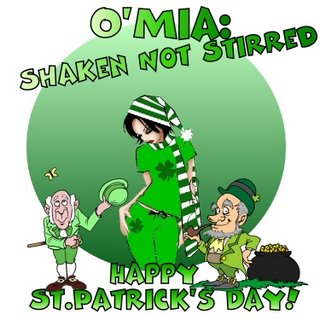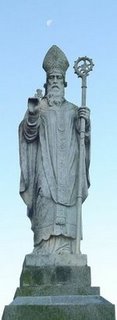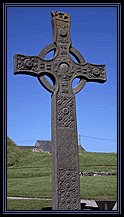
|
Mia: Shaken Not Stirred |
|
|
Brand Spankin'
Random FamilyNew The Nun and The Left Handed Child Buenas Noche Bella Luna The Noid That Would Be King The Twilight Zone Toucan Sam Winner by TKO is “Superficial” The Pope and his i-Pod Impromptu Therapy Session Welcome Back Ritzy!! Book Lovin' Blogs
The Good, The Bad
& The Not Too Cute Archives
September 2004
October 2004 November 2004 December 2004 January 2005 February 2005 March 2005 April 2005 May 2005 June 2005 July 2005 August 2005 September 2005 October 2005 November 2005 December 2005 January 2006 February 2006 March 2006 April 2006 May 2006 June 2006 July 2006 August 2006 September 2006 October 2006 November 2006 December 2006 January 2007 February 2007 March 2007 April 2007 May 2007 June 2007 July 2007 August 2007 October 2007 November 2007 December 2007 January 2008 February 2008 March 2008 April 2008 May 2008 June 2008 July 2008 August 2008 September 2008 October 2008 November 2008 December 2008 January 2009 February 2009 March 2009 April 2009 May 2009 June 2009 July 2009 August 2009 October 2009 December 2009 January 2010 May 2010 June 2010 July 2010 January 2011 April 2011 May 2011 June 2011 July 2011 |
I dig the writing so much
I'd read their grocery lists If published
Karen Marie Moning Gena Showalter Kresley Cole Alianne Donnelly Liz Maverick Emma Holly Dianna Love Sherrilyn Kenyon Jennifer Weiner Jim Butcher
Blogs Me Likey!
Dear Darla
A Starving Writer's Blog Victoria's Blog Egyptian Sandmonkey Fried Spam Just Me In Ohio Kuma's Space Lost In America Petite Anglaise RoseByAny@-;---- Tapsalteerie Farms The Anchored Nomad
This work is licensed under a Creative Commons Attribution-NonCommercial 2.5 License.
|
|
Friday, March 17, 2006St. Patrick's Day Happy St. Patrick's day! Here in NYC we're getting ready to party. The world's biggest St. Patrick's day parade is set to begin in a few hours. For today at least everyone in NYC is Irish so feel free to call me O'Mia. My mom has this thing about exposing us to different cultures via food so in the grand old family tradition we will be dining on Irish Soda Bread, Potatoes, Corned Beef and Cabbage, Apple Mash tonight. In what seems to becoming a habit with me whenever a holiday rolls along here's a little history lesson about the man, the myth, the religious icon that the holiday is named after...  St. Patrick, the patron saint of Ireland, is one of Christianity's most widely known figures. Many of the stories traditionally associated with St. Patrick, including the famous account of his banishing all the snakes from Ireland, are false, the products of hundreds of years of exaggerated storytelling. Legend credits Patrick with banishing snakes from the island, though post-glacial Ireland never actually had snakes; one suggestion is that snakes referred to the serpent symbolism of the Druids of that time and place, as shown for instance on coins minted in Gaul or that it could have referred to beliefs such as Pelagianism, symbolized as "serpents." Legend also credits Patrick with teaching the Irish about the concept of the Trinity by showing people the shamrock, a three-leaved clover, using it to highlight the Christian dogma of 'three divine persons in the one God. It is known that St. Patrick was born in Britain to wealthy parents near the end of the fourth century. His given name was Magonus Sucatus or Maewyn Succat . He is believed to have died on March 17, around 460 A.D. Patrick was the son of Calpurnius, a Roman-British army officer who later on became a Christian deacon, but it’s been suggested that he took on the role because of tax incentives and there is no evidence that Patrick came from a particularly religious family. At the age of sixteen, Patrick was kidnapped by a group of Irish raiders who were attacking his family's estate. He was taken to Ireland and sold into slavery to a Druidic high priest. Lonely and afraid, Patrick turned to his religion for solace, becoming a devout Christian and began to have religious visions. It was at this time he learned the native Celtic language and the customs of the druids. After more than six years as a prisoner, Patrick escaped. According to his writing, a voice—which he believed to be God's—spoke to him in a dream, telling him it was time to leave Ireland. To do so, Patrick walked nearly 200 miles from County Mayo, where it is believed he was held, to the Irish coast. After escaping to Britain, Patrick reported that he experienced a second revelation—an angel in a dream tells him to return to Ireland as a missionary. Soon after, Patrick began religious training, a course of study that lasted more than fifteen years. It was during this time that changed his name to Patrick (Patricius, in Old Irish spelled Pádraig). After his ordination as a priest, he was sent to Ireland with a dual mission—to minister to Christians already living in Ireland and to begin to convert the Irish. Patrick wrote that he daily expected to be violently killed or enslaved again. His Letter to the Soldiers of Coroticus protested British slave trading and the slaughter of a group of Irish Christians by Coroticus's raiding Christian Welshmen, and is the first surely identified literature of the British or Celtic Catholic Church. Patrick gathered many followers, including Saint Benignus, who would become his successor. His chief concerns were the raising up of native clergy, and abolishing Paganism, idolatry, and Sun-worship. He made no distinction of classes in his preaching and was himself ready for imprisonment or death. He was the first writer to condem all forms of slavery.  Familiar with the Irish language and culture, Patrick chose to incorporate traditional ritual into his lessons of Christianity instead of attempting to eradicate native Irish beliefs. For instance, he used bonfires to celebrate Easter since the Irish were used to honoring their gods with fire. He also superimposed a sun, a powerful Irish symbol, onto the Christian cross to create what is now called a Celtic cross, so that veneration of the symbol would seem more natural to the Irish. Little did he know centuries later that very same cross would make a kick ass tattoo. Patrick was quite successful at winning converts.Through active preaching, he made important converts evenamong the royal families. And this fact upset the Celtic Druids.Patrick was arrested several times,but escaped each time.For 20 years he had traveled throughout Ireland,establishing monasteries across the country. He also set up schools and churches which would aid him in his conversion.He developed a native clergy,fostered the growth of monasticism, Familiar with the Irish language and culture, Patrick chose to incorporate traditional ritual into his lessons of Christianity instead of attempting to eradicate native Irish beliefs. For instance, he used bonfires to celebrate Easter since the Irish were used to honoring their gods with fire. He also superimposed a sun, a powerful Irish symbol, onto the Christian cross to create what is now called a Celtic cross, so that veneration of the symbol would seem more natural to the Irish. Little did he know centuries later that very same cross would make a kick ass tattoo. Patrick was quite successful at winning converts.Through active preaching, he made important converts evenamong the royal families. And this fact upset the Celtic Druids.Patrick was arrested several times,but escaped each time.For 20 years he had traveled throughout Ireland,establishing monasteries across the country. He also set up schools and churches which would aid him in his conversion.He developed a native clergy,fostered the growth of monasticism,established dioceses, and held church councils. Labels: Mia Explains...  @
9:46 AM @
9:46 AM
6 comment from: Mica, Mr. Khurram, ritzy, Mia, Emory Mayne, Mia, 
|


